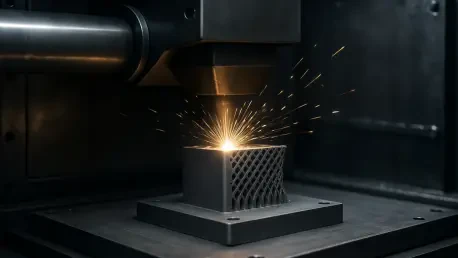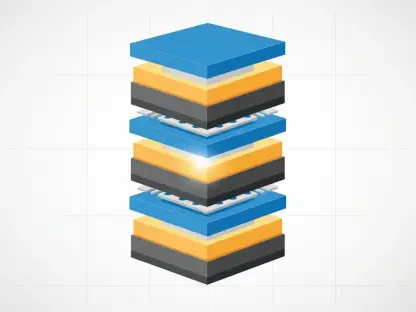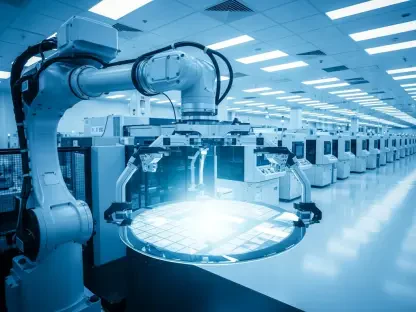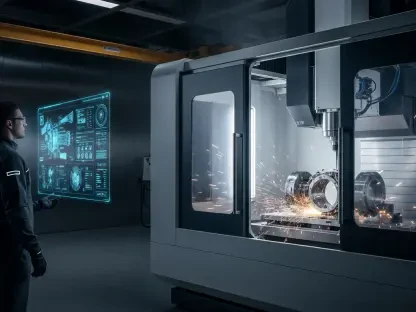The evolving landscape of additive manufacturing has shifted dramatically with the rise of metal 3D printing technologies, positioning the United States defense sector at a pivotal crossroads. This cutting-edge technology, which allows for the precise creation of complex metal parts, holds the potential to revolutionize military manufacturing processes. As defense manufacturers grapple with global competition, supply chain vulnerabilities, and stringent quality requirements, integrating metal additive manufacturing could provide a much-needed boost. This exploration delves into the role of metal 3D printing within defense manufacturing, examining its capabilities for innovation and scalability. Amid these challenges and opportunities, metal 3D printing emerges as a formidable force, poised to transform the defense manufacturing landscape.
The Role of Metal 3D Printing in Defense Manufacturing
In the realm of defense manufacturing, the ability to produce complex, high-strength, and lightweight components is crucial. Metal 3D printing, known for its capacity to produce intricate designs previously impossible with traditional methods, stands at the forefront of this technological frontier. This technology not only enhances design flexibility but also significantly reduces the time from concept to production. The strategic implementation of metal AM within defense manufacturing can redefine battlefield readiness by allowing for rapid prototyping and quicker iteration of new designs, ultimately introducing innovative solutions into the field more swiftly.
The versatility of metal 3D printing also plays a pivotal role in manufacturing. It enables the production of lighter yet stronger parts, a crucial aspect when efficiency and performance are paramount, such as in aerospace and armored vehicles. This improvement in parts’ performance not only boosts operational efficiency but also reinforces the safety and reliability of military equipment. The ability to manufacture parts at remote locations, using only a digital design and raw materials, offers an unprecedented level of modularity and responsiveness to urgent operational requirements, potentially reducing the logistical burden on armed forces by facilitating on-site repairs and replacements.
Strategic Partnerships and Collaborations
For the metal AM sector to thrive within defense, strategic partnerships with technology firms, research institutions, and government bodies are essential. These collaborations not only ensure the sharing of technological advancements but also facilitate the creation of industry standards. Partnerships between companies specializing in AM technology and defense contractors can catalyze the adoption of metal 3D printing in defense applications, as evidenced by current collaborations. Such alliances enable the pooling of resources and expertise, leading to unprecedented innovations and solutions attuned to contemporary defense challenges.
Collaborations also extend to academic partnerships that foster research and development. By working closely with universities and research institutions, defense manufacturers can tap into a reservoir of knowledge to advance the capabilities of metal 3D printing. This symbiotic relationship not only accelerates innovation but also drives the emergence of new applications essential for maintaining a technological edge. Collaboration with standards organizations is another facet of this ecosystem. Establishing industry standards ensures the consistency and reliability of 3D-printed components, a crucial consideration for defense applications where part failure is not an option.
Overcoming Challenges for Implementation
While metal 3D printing promises transformative impacts, its integration into defense manufacturing is not without challenges. One of the primary hurdles is the development of a skilled workforce proficient in additive manufacturing technologies. Addressing the skills gap involves comprehensive training programs, ensuring that personnel are equipped to wield this technology effectively. Therefore, investment in education and training becomes pivotal, forming the backbone of a competitive and innovative manufacturing sector.
Another challenge lies in the standardization of processes, as the lack of established standards can impede the wide-scale adoption of metal AM. As each 3D-printed component must meet strict defense standards, collaborating with industry bodies to develop these benchmarks is essential. Equally, cybersecurity concerns persist as digital files used in 3D printing must be protected against unauthorized access and tampering. Ensuring the integrity of digital designs is crucial for maintaining national security across manufacturing operations.
Future Prospects in the Defense Sector
The future of metal 3D printing in the U.S. defense sector holds immense promise. As the technology matures, its application is expected to expand beyond prototyping to full-scale production. The ability to swiftly adapt and produce mission-specific components could redefine strategic operations, offering a distinct advantage in terms of preparedness and flexibility. Furthermore, the environmental benefits associated with metal AM, such as reduced waste and energy consumption, align with broader defense sustainability goals. These advantages are likely to foster increased investment and adoption as defense manufacturers seek to improve both effectiveness and environmental impact.
Integrating metal 3D printing with other emerging technologies, like artificial intelligence and the Internet of Things (IoT), can further enhance its capabilities. Such integrations may allow for smarter production lines and more sophisticated design processes, bolstering the digital transformation of defense manufacturing. This evolution presents an opportunity for the defense sector to lead industry innovation, setting a precedent for the wider manufacturing ecosystem.
Navigating the Path Forward
Reflecting on the integration of metal 3D printing within the U.S. defense manufacturing sector, it is evident that this technology plays a crucial role in achieving a competitive edge. By addressing the challenges and fostering strategic partnerships, defense manufacturers are poised to harness the full potential of metal additive manufacturing, ensuring that they remain at the forefront of innovation. As they navigate the complexities of adoption, stakeholders are encouraged to prioritize workforce development, secure digital infrastructures, and establish comprehensive standards, all of which form the foundation of a resilient and innovative manufacturing framework.
Looking ahead, it is anticipated that the focus on metal 3D printing will enable the U.S. defense sector to swiftly adapt to changing demands and technological advancements. The impact of this technology extends beyond traditional manufacturing boundaries, prompting a reimagination of operational strategies and product life cycles. As the defense industry progresses, it sets an example for the larger manufacturing sector, illustrating the transformative potential of advanced manufacturing technologies in overcoming both present and future challenges.









